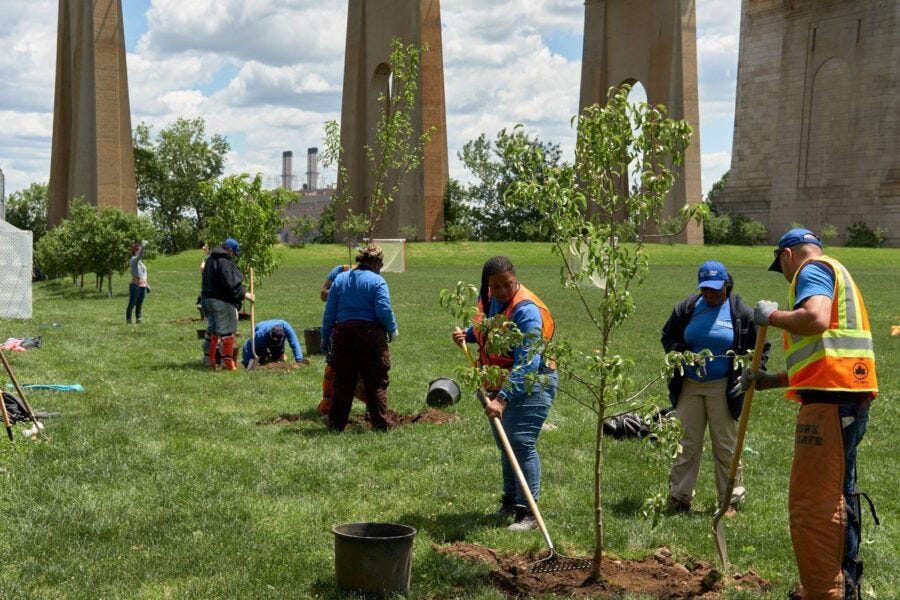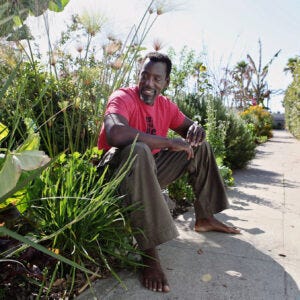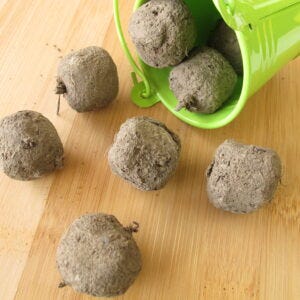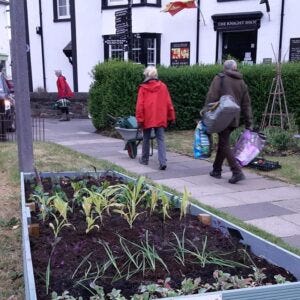Growing food in public spaces has become more popular over the past few years, especially since the pandemic uncovered how serious food insecurity has become. With public planting, edible plants are grown on sidewalks, in front yards, in public parks, and outside of buildings for anyone to enjoy. They can be maintained by neighbors, local nonprofits, city parks departments, and/or nearby businesses.
There are various types of public planting, including:
Public Fruit Trees
Guerilla Gardening
Seed Bombs
Community Gardens
Well-Beeing Gardens
Food Forests
Public Fruit Trees are exactly what you think – fruit trees planted in public places. There are more than you might think too – check out Falling Fruit’s global map compiled by free food enthusiasts around the world. If you know of some trees in your area that aren’t listed, please add them to this growing database!
If you’d like to plant your own tree, find out how in Change Food’s “How to Plant a Fruit Tree.”
Guerrilla Gardening is a movement of people who garden in areas where they’re not legally allowed, such as on vacant public lots, private property or street medians. The point of the movement is simply to beautify or make useful (with food) areas that have been abandoned and forgotten. We can’t condone doing this, but a lot of food has been grown and shared with hungry people.
The best known group in the U.K. is Incredible Edible – what started as a group of friends planting food anywhere they could in the town of Todmorden in 2008 has grown into a network of food growers in the UK and beyond. They even have guides now on how to work with local business or city leaders to create partnerships.
In the U.S., “Gangsta Gardener” Ron Finley is the most popular guerilla gardener today. Rather than backing down when he received a citation from the city for growing food in his Los Angeles neighborhood, Finley and his team were behind a 2015 ordinance that changed the law and began allowing residents to garden on certain city property without a permit.
Seed Bombs are a creative type of public planting where mixtures of soil, clay and seeds are packed together into balls and thrown into neglected areas or strategically placed in unused spaces. They were popular in the 1970s in New York City when the city was bankrupt and full of abandoned and neglected spaces. Find out how to make them yourself – you can give them as gifts!
Community Gardens are probably the most popular type of public planting. These gardens are for the public to plant and harvest food. Many community gardens charge a nominal fee for neighbors to have their own small plot, but many also have areas where food is planted for anyone in the neighborhood. Gardens that have at least part of the garden open for anyone to harvest food is considered a type of public planting.
Well bee-ing gardens might not be as well known, but they are a brilliant concept. The plants and herbs grown are friendly to bees and also support our physical, mental, and social wellbeing. Examples of plants are sage, witch hazel and echinacea. A U.K. group has planted several outside health centers, and even has a Trail of Well-Beeing at their garden in Kentish Town.
Food Forests are what you think – they’re forests that are planted using food plants and food trees. Some are private and planted in a backyard, but others are created in open spaces for anyone in the area to enjoy. They involve six or seven layers of plants – from ground cover crops like strawberries to trees like large fruit or nut trees. They’re grown using permaculture methods which means once rooted and growing, they most likely don’t need to be weeded, fertilized or tended to at all.
Public food planting might not solve food inequality, but it can be a big help in providing fresh, healthy food to people who otherwise might not have access to it. You can find more information about public planting at Change Food.
Thank you for reading the Whole Health Journal, a space dedicated to spirituality, wellness and healthy food. A peek into my latest book coming soon. Free and paid. By Diane Hatz. If you like what you read, please subscribe.
This article also appeared on the Whole Healthy Group blog.







